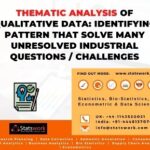Role of Image Augmentation in improving the database for effective classification.
Introduction
Deep learning models generally need a lot of training data. The more info, the better the model’s results. Quantitative image analysis involves utilizing digital images to provide data and information. However, there are difficulties to collect huge volumes of data(Kostrikov et al., 2020). And the trouble with the lack of data is that the profound learning paradigm does not learn the pattern or functions of data, such the unknown data may not work well. Image increase is a method of changing the original details in order to generate more information for model training. This means that the usable dataset for training a deep learning algorithm is being expanded artificially.
Problem faced with image dataset
Image analysis is the extraction of meaningful information from images; mainly from digital images by means of digital image processing techniques. The incompatibility of images is one of the problems with the image dataset. Some may be too small or too large, others might not be in the desired shape. The quantity of images in the training collection, which also results in over fit, is another common issue. To address those problems, a strategy is required by augmenting the images in the training set to improve the model’s potential to recognize various image variants. This enhances the scope of the model’s content. By varying comparison, distance, modified viewing angles and so on it is easier to distinguish target objects(Elgendi et al., 2021).
Rotation of images is one of the most widely employed strategies for increase the data size. It will support the adjustment in object orientation to make the model stable. The data analysis of the image stays the same even though the image is rotated(Pandey et al., 2020). The object does not change, but more training features are made to the algorithm. An example of the Image rotation is shown in figure 1.

Figure1: Image Rotation
Image shifting
Image shifting is another method of augmentation. Some scenarios exist where the artifacts in the picture are not fully centrally oriented. In such instances, a picture shift may be used to introduce image shift invariance(Abdelhack, 2020). By rotating the pictures, one can adjust the object’s location in the picture and offer the model more diversity. In the end, this could translate to a broader model. Another common approach is the flipping of images. Flipping is an extended version of rotation. It allows to flip the images in to a mirror image or upside down format as shown in figure 2

Figure2: Image Flipping
Image augmentation
Another type of Image augmentation is adding noise to the images. It is an essential image enhancement phase which helps the model learn the difference between an image and the noises. As a result, this ensures the model is more durable. Images come from various locations. The standard of the pictures from any source is also not the same. Some photographs can be really nice, and others may be poor(Mounsaveng, S., Laradji, I., Ben Ayed, I., Vazquez, D. and Pedersoli, 2021). Blurring the pictures in certain scenarios help to strengthen the intensity of the profound learning paradigm.

Figure 3: Image Blurring
Conclusion
The steps for image augmentation techniques is given in this blog. It is discussed the methods of rotating, shifting, flipping, and blurring the images. Also, the method of noising the images are discussed. With these augmentation approaches, data scientists would be able to significantly increase the volume of training data and improve the efficiency of the machine algorithms.
References
- Abdelhack, M. (2020). An Open-source Tool for Hyperspectral Image Augmentation in Tensorflow. https://arxiv.org/abs/2003.13502
- Elgendi, M., Nasir, M. U., Tang, Q., Smith, D., Grenier, J.-P., Batte, C., Spieler, B., Leslie, W. D., Menon, C., Fletcher, R. R., Howard, N., Ward, R., Parker, W., & Nicolaou, S. (2021). The Effectiveness of Image Augmentation in Deep Learning Networks for Detecting COVID-19: A Geometric Transformation Perspective. Frontiers in Medicine, 8. https://doi.org/10.3389/fmed.2021.629134
- Kostrikov, I., Yarats, D., & Fergus, R. (2020). Image Augmentation Is All You Need: Regularizing Deep Reinforcement Learning from Pixels. https://arxiv.org/abs/2004.13649
- Mounsaveng, S., Laradji, I., Ben Ayed, I., Vazquez, D. and Pedersoli, M. (2021). Learning data augmentation with online bilevel optimization for image classification. https://openaccess.thecvf.com/content/WACV2021/html/Mounsaveng_Learning_Data_Augmentation_With_Online_Bilevel_Optimization_for_Image_Classification_WACV_2021_paper.html
- Pandey, S., Singh, P. R., & Tian, J. (2020). An image augmentation approach using two-stage generative adversarial network for nuclei image segmentation. Biomedical Signal Processing and Control, 57, 101782. https://doi.org/10.1016/j.bspc.2019.101782



 Previous Post
Previous Post Next Post
Next Post